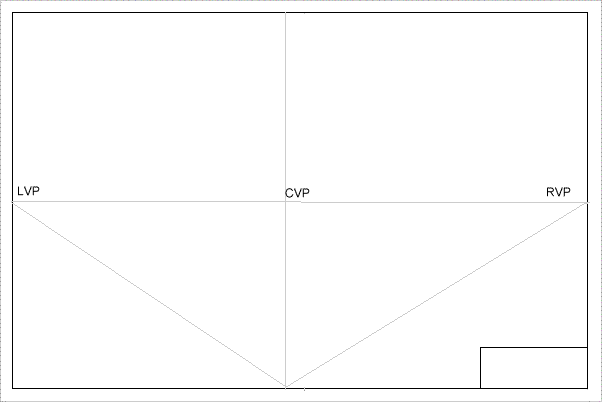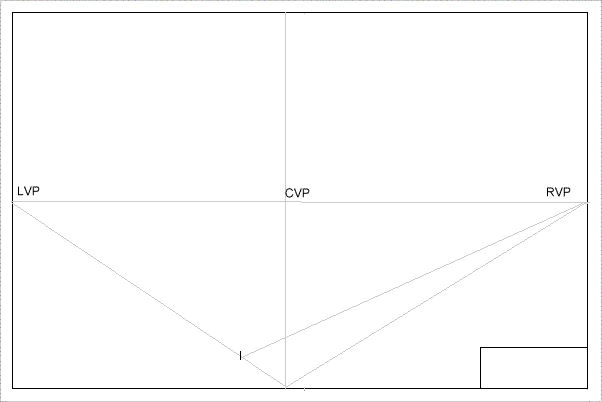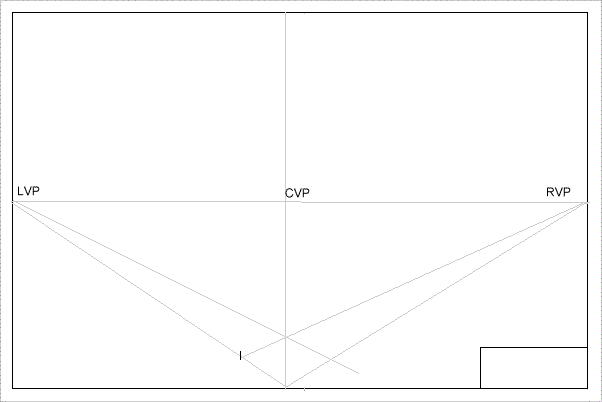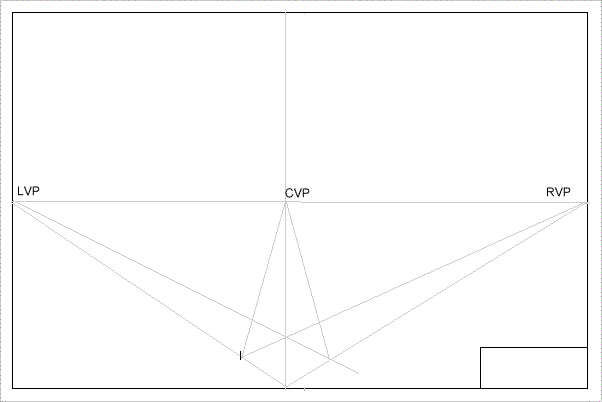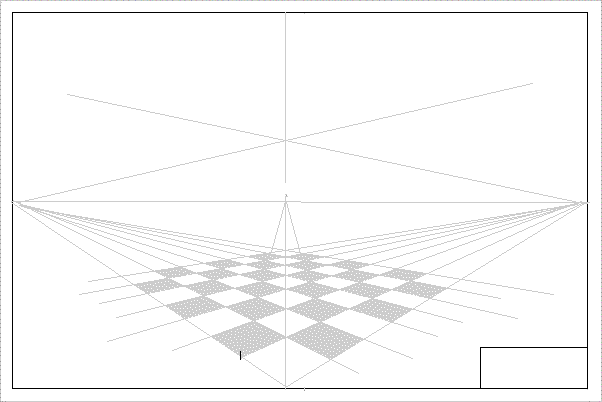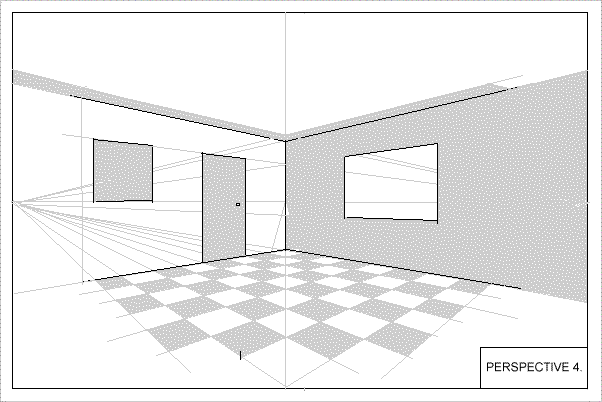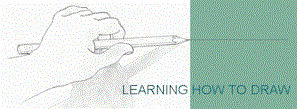 |
|
| LESSON
- PERSPECTIVE FOUR - CORNER OF ROOM
TIME:
Aim:
Materials:
Construct margin and title box then:
a) Quarter the page as shown with light lines then add the two additional lines as shown.
b) Measure a set distance up as shown 30mm (1,1/4") and join to RVP as indicated.
c) Where that line intersects the vertical line down from CVP construct light line from LVP as in the drawing.
d) Join the two lines to the CVP as shown.
e) Add the two extra light lines from LVP and RVP. We have now drawn four squares on the ground. We can now add many more going backwards using the same method of construction.
f) We now have 36 squares.
g)
Shade the alternate squares as shown. Now we have made a floor. At this stage
the student needs to be asked: Next we shall suggest some walls.
h) Add the two extra light lines 40mm (1,1/2") up from dead center
i) Firm in the walls.
j)
Using only vertical lines and lines going to RVP or LVP lightly construct
some windows and a door. Ask:
k)
Firm them in and add a door knob and a little shading on the ceiling. Ask:
l) I have added some more tiles (see if the student can do this by 'judgement') - an extra row on the right and one on the left - and shaded the door. Clean
up and print in the title as shown. Home
work: |
